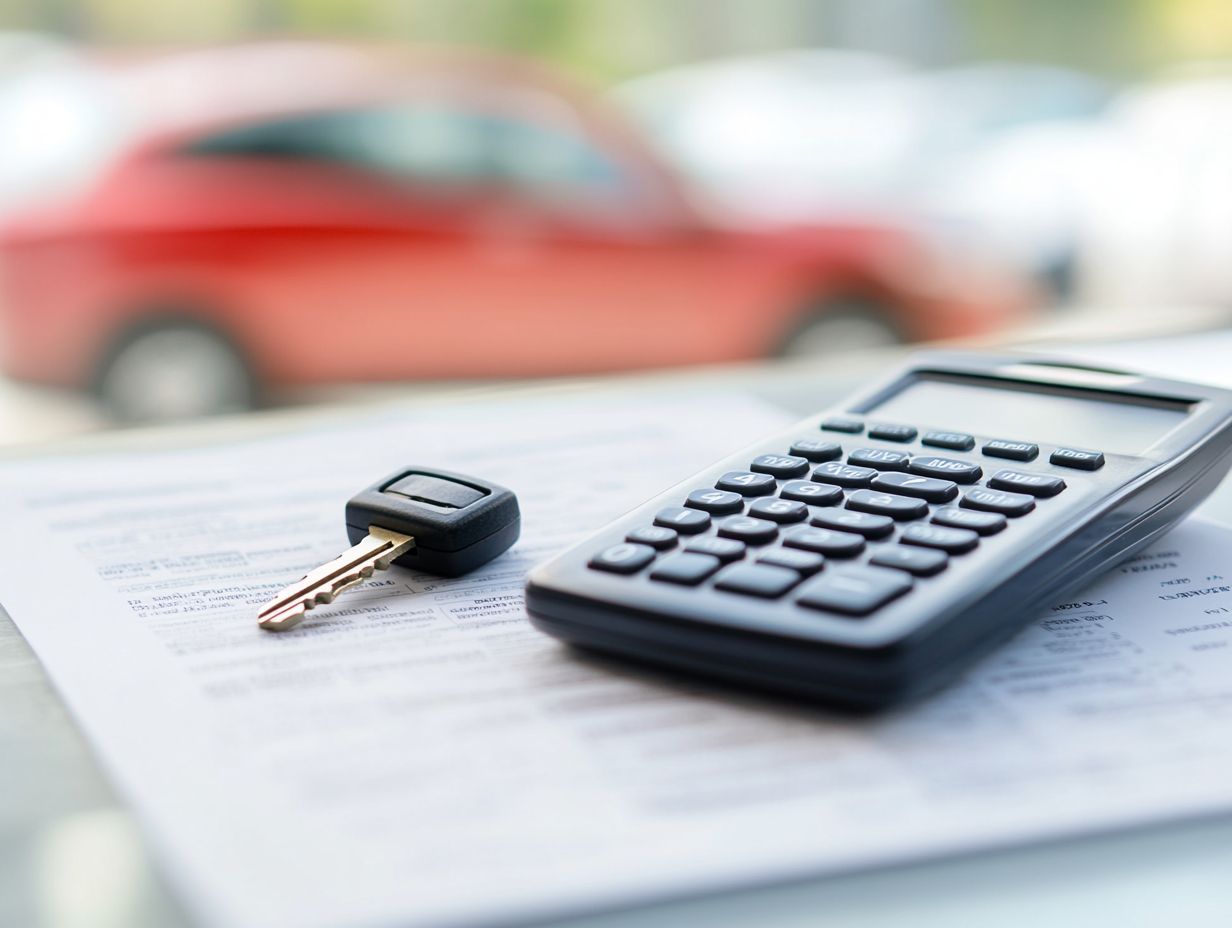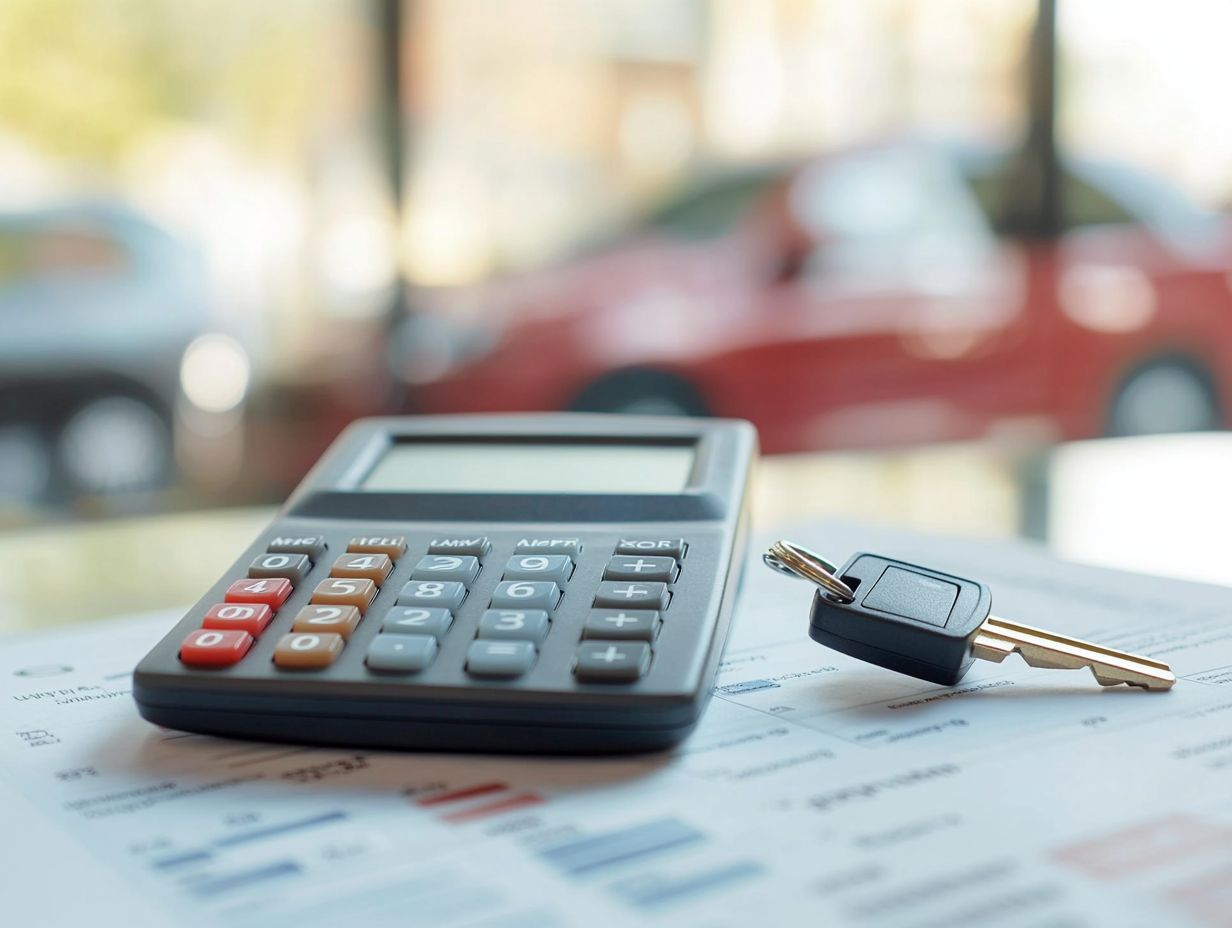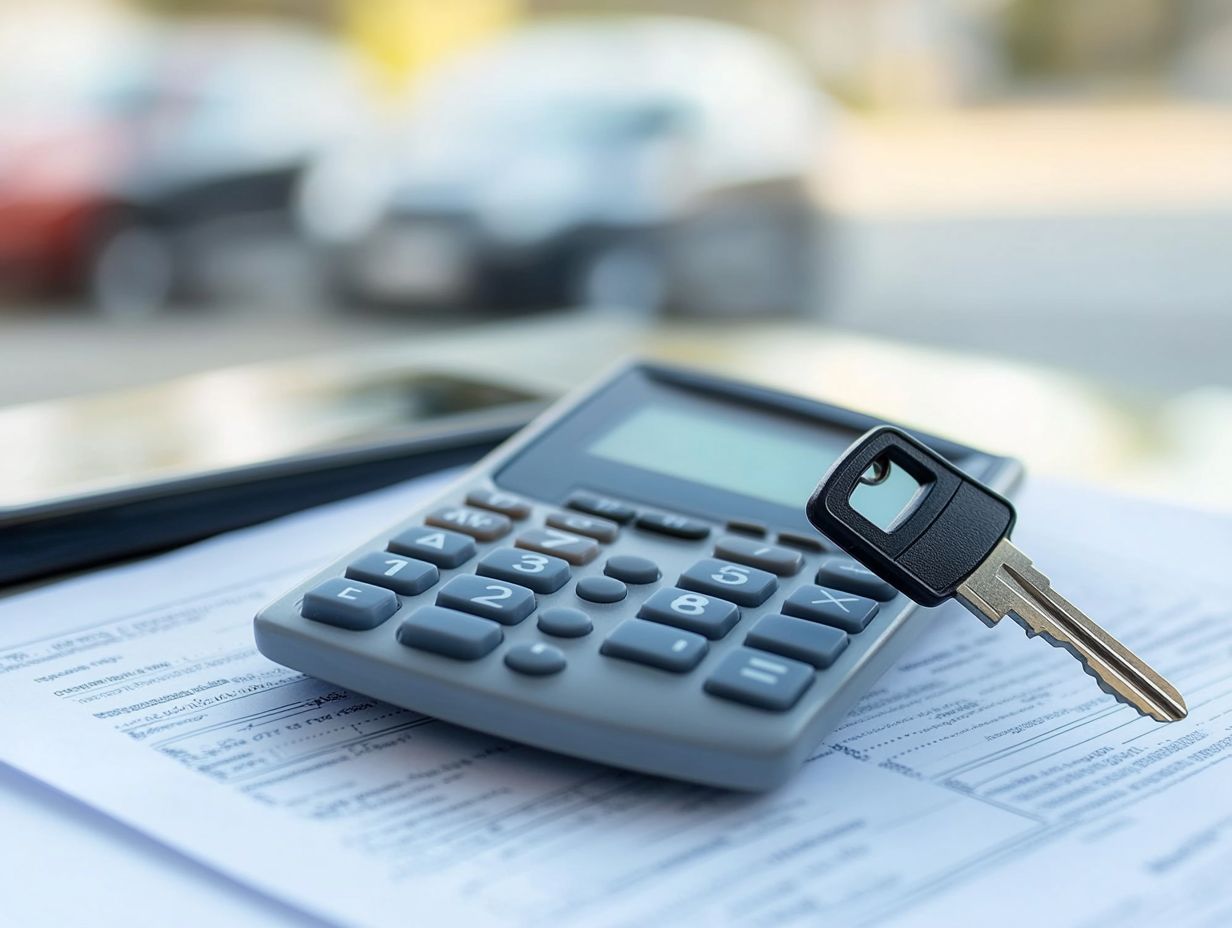Understanding APR in Auto Financing
When navigating the world of auto financing, grasping the concept of the Annual Percentage Rate (APR) is essential.
This article delves into what APR truly signifies, how it is calculated, and why it holds such significance for your monthly payments and the total cost of your loan.
It also contrasts APR with other financing options, weighing the advantages and disadvantages of each while offering valuable tips on how to secure the best APR available to you.
Whether you re a first-time buyer or considering refinancing, understanding APR can profoundly influence your financial choices. Don t miss out on opportunities to save!
Contents
Key Takeaways:

APR stands for Annual Percentage Rate, and it is an important factor to consider when financing a car. APR is calculated based on various factors, such as credit score and loan term, and it can significantly impact your monthly payments and total cost of the car.
Always compare APRs to find the best deal! Improving your credit score can also help in getting a better APR for auto financing.
What is APR in Auto Financing?
The Annual Percentage Rate (APR) in auto financing is an essential metric that reveals the true cost of borrowing money for your vehicle. It includes not only the interest rate but also any fees charged by lenders, giving you a complete picture of what you’ll pay throughout the life of the loan.
Understanding APR is crucial for you as a consumer seeking favorable financing options. It directly influences your monthly payments and the total cost of the vehicle.
Familiarizing yourself with how APR operates is vital. It helps you make informed decisions about auto loans.
Definition and Explanation
APR, or Annual Percentage Rate, is a key term in auto financing that encompasses the total cost of borrowing, including the interest rate and any additional fees imposed by the lender.
This comprehensive view empowers you to compare loan offers effectively. Being mindful of the APR allows you to evaluate various financing options and avoid hidden costs that could significantly impact your overall expenses in the long run.
How APR is Calculated
Calculating the Annual Percentage Rate (APR) involves a clear formula that takes into account various factors, including the interest rate, loan amount, and any fees imposed by the lender.
Understanding how APR is determined reveals the total cost of borrowing. It also emphasizes how your credit score and financial history influence the rates available to you.
Lenders must disclose this information, giving you the power to compare rates and make informed decisions about your vehicle financing.
Factors and Formula

The formula for calculating APR considers several essential elements: the loan amount, the interest rate, and any additional fees that the lender may impose. These factors are important for determining the total cost of borrowing.
The loan amount is quite straightforward; larger sums naturally lead to higher overall interest costs.
The interest rate, typically presented as a percentage, has a direct impact on how much you’ll end up paying over time. For example, even a slight uptick in the rate can result in significantly higher payments, particularly for long-term loans.
Any fees such as origination or closing costs are amortized over the life of the loan, which affects the APR. By reducing these fees or successfully negotiating a lower interest rate, you can decrease the overall APR, making the loan more advantageous for you.
Ready to save money? Let s dive into APR!
The Importance of APR in Auto Financing
APR is very important in auto financing. It profoundly influences both your monthly payments and the overall cost of your vehicle.
A lower APR can translate into considerable savings throughout the life of the loan. In contrast, a higher rate may escalate the interest charged, amplifying your financial obligations.
Understanding how APR affects your loan terms and financial requirements is essential for anyone contemplating a car loan or vehicle financing.
By diligently comparing APR across different lenders, you can make informed decisions that harmonize with your budget and broader financial aspirations.
Impact on Monthly Payments and Total Cost
The APR plays a pivotal role in shaping both your monthly payments and the overall cost of your auto loan. It is an essential factor to consider when financing your vehicle.
For example, if you get an APR of 3% on a $20,000 loan over five years, you ll enjoy significantly lower payments compared to someone facing a 10% APR for the same amount and term.
In the first case, your monthly payment might hover around $359, resulting in a total repayment of approximately $21,400. In contrast, with the higher APR, your monthly payment could jump to about $424, leading to a total repayment nearing $25,440.
This striking difference highlights just how crucial it is to secure the best possible APR. It directly influences your affordability and overall financial well-being.
Comparing APR to Other Financing Options
When you compare APR to other financing options, grasp the distinct advantages and disadvantages each presents.
While APR offers a transparent view of borrowing costs, traditional loans and alternative lenders may feature different structures and terms that impact your overall financial commitments.
Weigh the pros and cons of APR and other options to decide wisely. Your choice of financing can significantly influence your budget and credit score, so exercising due diligence is essential.
Pros and Cons of APR in Auto Financing

Discover how APR can make or break your car financing deal! The pros and cons of using APR in auto financing can significantly shape your decision on which loan to choose, influencing both your short-term and long-term financial health.
A clear understanding of the Annual Percentage Rate (APR) the total cost of borrowing money expressed as a percentage offers you a straightforward means to compare different lending options. This clarity becomes especially valuable when navigating the complexities of auto loans, where terms can vary dramatically.
While APR serves as a helpful benchmark, remember that it can sometimes conceal hidden costs. These include application fees or prepayment penalties, which may impact the overall expense of the loan.
For example, a loan might look attractive with its low APR, but hefty fees may raise the actual cost significantly. You re encouraged to meticulously analyze the fine print and seek out details like the total loan cost or monthly payment estimates to fully understand your financial obligations before making any commitments.
How to Get the Best APR for Auto Financing
Securing the best APR for auto financing demands a strategic approach. This involves skillful negotiation with lenders and a focus on enhancing your credit score.
By understanding the factors that impact your APR such as your credit history and the fees imposed by lenders you can effectively position yourself for more favorable terms.
Employ savvy negotiation techniques to significantly lower your interest rate, which in turn reduces both your monthly payments and the overall cost of your loan.
As competition among financial institutions intensifies, taking a proactive stance in your financing strategy can lead to substantial savings.
Don’t miss out on the best rates available! Start comparing APRs today to save on your next car loan!
Tips for Negotiating and Improving Your Credit Score
Effective negotiation and improving your credit score are two pivotal strategies for securing the best APR in auto financing. This can significantly reduce your loan costs.
By equipping yourself with knowledge about current market rates, you can approach negotiations with lenders confidently. Understanding the details of loan terms, like the difference between variable and fixed interest rates, gives you the power to make informed decisions.
For instance, if you have a credit score of 700, you might secure a significantly lower rate compared to someone with a score of 600.
To boost your credit score, start by paying down existing debts. This can positively impact your credit utilization ratio, which refers to the amount of credit you are using compared to your total credit limit.
Check your credit report now! Fixing errors can boost your score quickly. Addressing any inaccuracies promptly is crucial, as studies show that up to 25% of credit reports contain errors that can inadvertently lower scores.
Taking these proactive steps enhances your bargaining power and paves the way for more favorable loan terms.
Frequently Asked Questions
What is APR in auto financing?

APR is the annual cost of borrowing money for a car, including interest and other fees, expressed as a yearly percentage.
Why is understanding APR important in auto financing?
Knowing about APR can save you money and help you make better choices! It helps you compare the costs of different car loan offers and determine the overall cost of financing a car.
How is APR calculated in auto financing?
APR is calculated by taking into account the interest rate, loan amount, and any additional fees associated with the loan. It is then expressed as a percentage of the total loan amount.
What factors can affect APR in auto financing?
The main factors that can affect APR include your credit score, the length of the loan, and the type of vehicle being financed.
What is a good APR for auto financing?
A good APR can vary, but generally, a lower APR is considered better. Aim for an APR that is below the average rate for car loans.
How can I lower the APR for my auto financing?
To lower your APR, try improving your credit score, negotiating with the lender, or putting down a larger down payment to reduce the loan amount.






